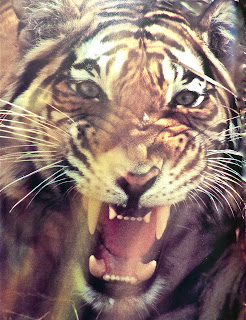A midsummers dawn - simply the best time to be alive. The longest
day had just passed and there was everything to look forward to as we headed towards the best of the years river fishing … but not yet.
There is one species of fish that I have an even greater
passion for than roach and that’s rudd. Growing up in the Fens at Ely on the Gt.Ouse and
enjoying family holidays on the Norfolk Broads in the late 50's, I grew to love the gorgeous,
golden beauties and even today the mere thought of them gets me excited.

Like many of my generation, I was inspired by Bernard Venables' book, 'Mr. Crabtree Goes Fishing' and still enjoy going down memory lane when looking at my battered copy. It's pleasing that the great man is being honoured with a TV series and new version of the book right now.
I was keen to 'live the dream', convinced Mum and Dad that I just
had to visit the Broads and when finally there, carefully followed Bernard's lessons to Peter.

I only caught small ones when using the anchored bread trick, but remembered to keep my little boat well away from a large shoal I'd found in a remote corner of Hickling Broad.
 |
| I really was 'living the dream' |
In the evening I rowed back to them in my little dinghy and remembering to keep well away, made a long cast to the reed edge with bread flake under a
stubby waggler. I caught 22 of them before it was too dark to see. The smallest weighed 1/10 and ten of them
were over 2lbs, with the best going 2/5 and 2/3. I’ve never really recovered.
 |
| Sorry about the bobble hat but I was only sixteen |
With so many happy memories still fresh in my angling memory bank I had to return, so this last two years I’ve made a pilgrimage back to the
Fens, exploring the rivers, drains and lakes in the hope of beating my PB of
2/9, a figure I’ve managed to equal in five different waters, including Ireland
… one day I might beat it … one day?
 |
| red maggots lured them in front of the camera |
 |
| 2/11 and 2/9 - a perfect brace |
I had my chance when filming 'Catching the Impossible' with Martin Bowler, a shoal of 14 large rudd swimming beside us in the crystal clear water. I had to film the underwater shots first, then Martin had to catch a couple for the camera before it was my turn. Sadly, my turn never arrived because the shoal just drifted away ... one day ... one day.
 |
| tranquil tench time |
In 2011 I tried the River Cam and the drains and lodes, the
first time I had fished them for fifty years. Back then, us energetic schoolboys used to
cycle over there from Ely, catch rudd and then cycle all the way back. Funny
how the wind was always against us whatever direction we were travelling! It’s still a wonderful place, 'the land of sky’, as inspiring as ever and even
better now than in my childhood.
 |
| The Land of Sky |
 |
| c. Danny Green |
 |
| c. Richard Brooks |
Wicken Fen didn’t have breeding marsh harriers and
bearded tits then but it does now. I spent as much time birding as I did
fishing, harriers regularly drifting over cruisers on the Cam, the occupants blissfully
unaware poor souls. In 2011, I managed rudd to 2/4 so a return to the Fens was inked into the
diary, especially as all the locals like Chris Hammond had made me very welcome.
 |
| Fish don't get any more beautiful do they? |
 |
| Yes, that is a swing tip - very effective too |
Last year, with help and advice from Graham Tweed – thanks
Graham – President and Sec. of CFPAS – enjoyable company on the bank too – I
decided to try Milton Country Park, a complex of crystal clear weedy lakes …
classic rudd country. Friend Chris said he thought the decision was a bit ‘left
field’ but ‘it seemed like a good idea at the time’! I picked the lake with the
biggest ones of course and started well, the first rudd going a respectable
1/9. [No picture as it had two ugly cormorant slashes across it’s body].
However, I never managed another much over a pound and I blamed the weather.
Strong wind and heavy rain battered into my face all week, the mud getting
deeper and the rats more numerous.
I did enjoy the challenge though, especially when of all
things, a marsh harrier hunted a nearby reedbed. It was such a rare bird when I
grew up in the 50’s, restricted to just three surviving pairs but here it was
now, floating over houses by the A14 in Cambridge – wonderful. Just goes to prove
the cliché that there’s more to fishing than catching fish. It also proved that
not all is gloom and doom out there in the wild.
I did catch plenty of small rudd, some splendid tench to
6lbs or so and several ancient, wild looking bream. They certainly were wild
when hooked, one clearing the water by a good two feet. They all weighed about
five pounds, their impressive bids for freedom making up for their lack of
size, a highlight of the trip.
 |
| Believe me, it really did fight |
The low point came at the end when the rats got to me ; a
dose of what felt like Wiel’s desease or leptospirosis, the symptoms matching
perfectly. I felt so awful I delayed driving home for a day. Hospital blood
tests and stomach analysis were inconclusive but it took me three weeks to
recover. Those big rudd still beckon though ; I saw them out there.
























































